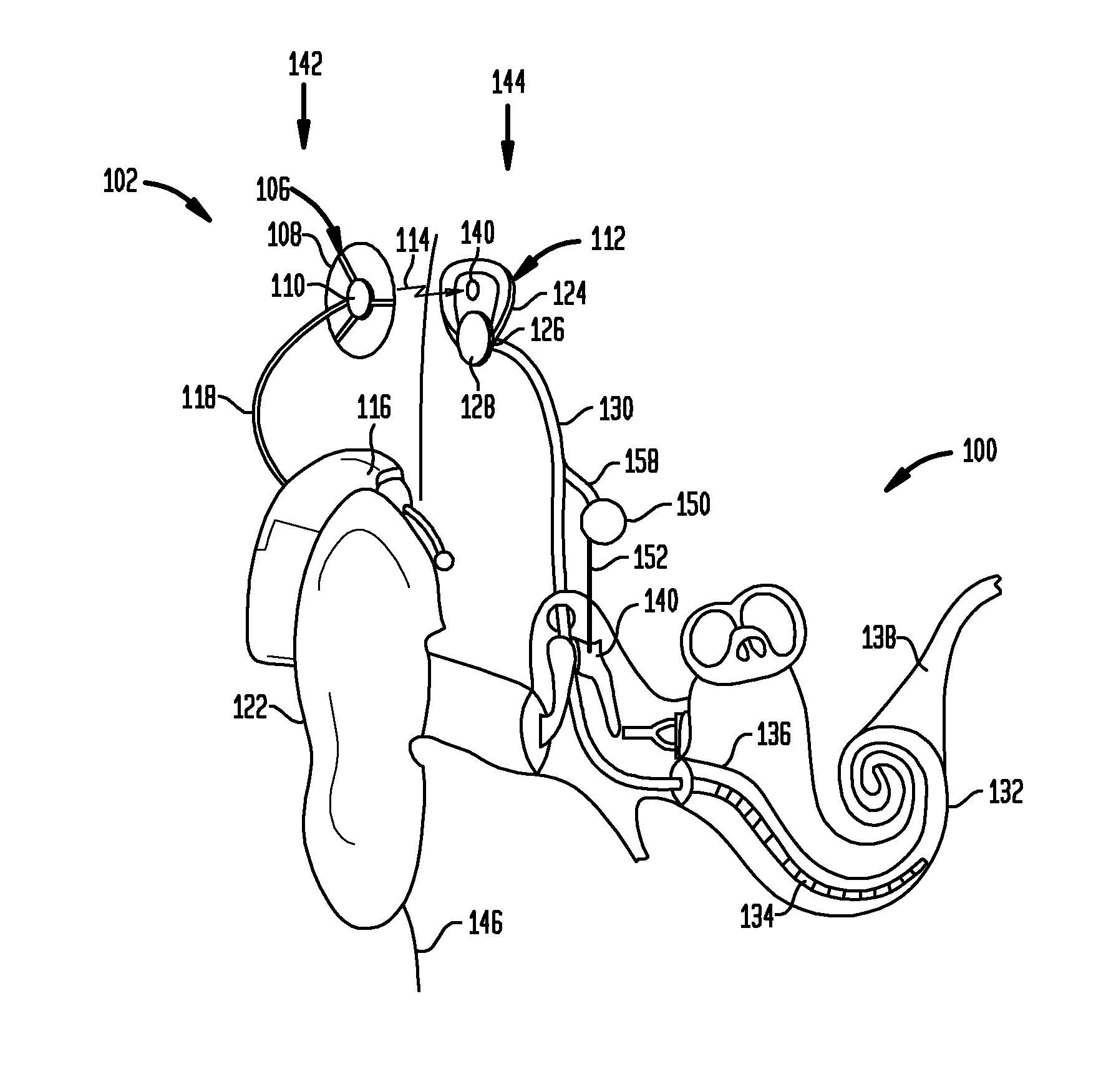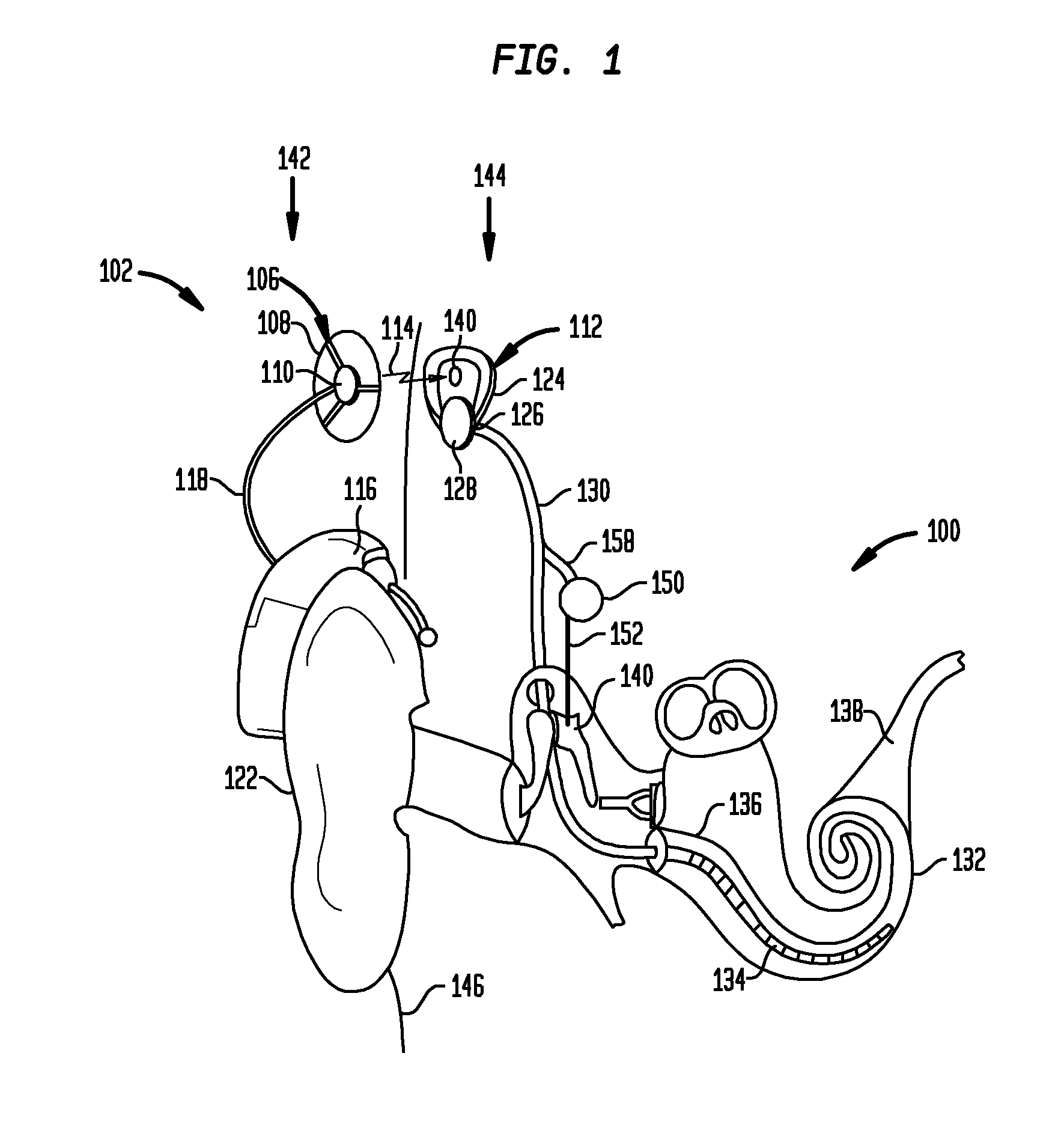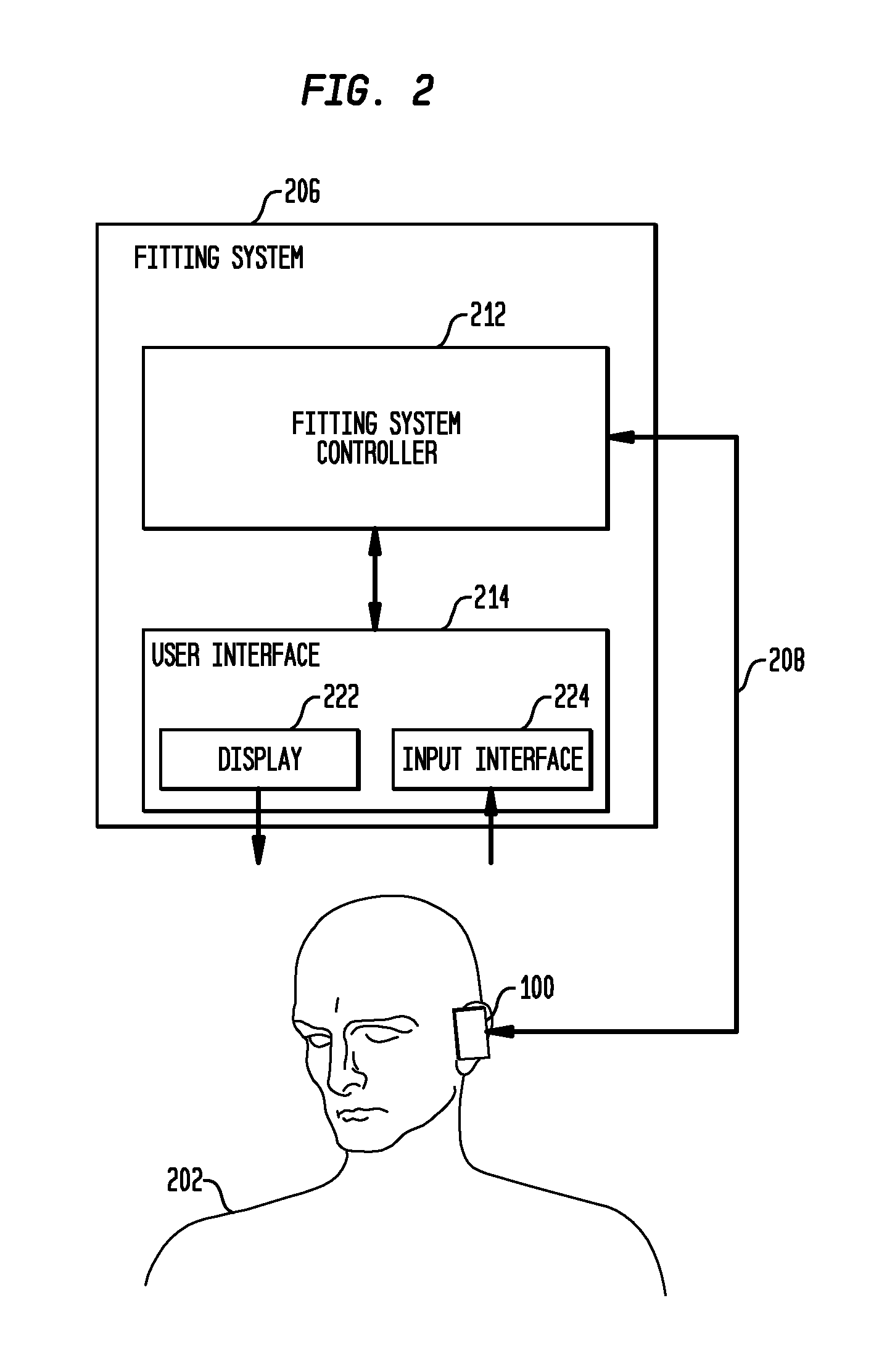Using a genetic algorithm employing dynamic mutation
a genetic algorithm and dynamic mutation technology, applied in the field of stimulating medical devices, can solve the problems of not being able to identify the optimal parameter, unable to experience all of the alternatives, and unable to hear loss
- Summary
- Abstract
- Description
- Claims
- Application Information
AI Technical Summary
Benefits of technology
Problems solved by technology
Method used
Image
Examples
Embodiment Construction
[0023]Aspects of the present invention are generally directed to the use of a genetic algorithm in fitting a stimulating medical device. In an embodiment, a fitting system may mutate generated child MAPs in accordance with a dynamic mutation rate. The mutation rate applied by the fitting system may vary based on, for example, the homogeneity of child MAPs generated in a particular generation. An exemplary embodiment of a genetic algorithm using a dynamic mutation rate will be discussed in more detail below after a presentation of an exemplary environment for implementation of such an algorithm.
[0024]FIG. 1 is a schematic diagram of an exemplary cochlear implant system 100 which may be fitted to an individual patient in accordance with embodiments of the present invention. This embodiment of cochlear implant system 100 has single- and mixed-mode operational capabilities. With regard to an electrical stimulation mode of operation, cochlear implant system 100 provides direct electrical...
PUM
 Login to View More
Login to View More Abstract
Description
Claims
Application Information
 Login to View More
Login to View More - R&D
- Intellectual Property
- Life Sciences
- Materials
- Tech Scout
- Unparalleled Data Quality
- Higher Quality Content
- 60% Fewer Hallucinations
Browse by: Latest US Patents, China's latest patents, Technical Efficacy Thesaurus, Application Domain, Technology Topic, Popular Technical Reports.
© 2025 PatSnap. All rights reserved.Legal|Privacy policy|Modern Slavery Act Transparency Statement|Sitemap|About US| Contact US: help@patsnap.com



